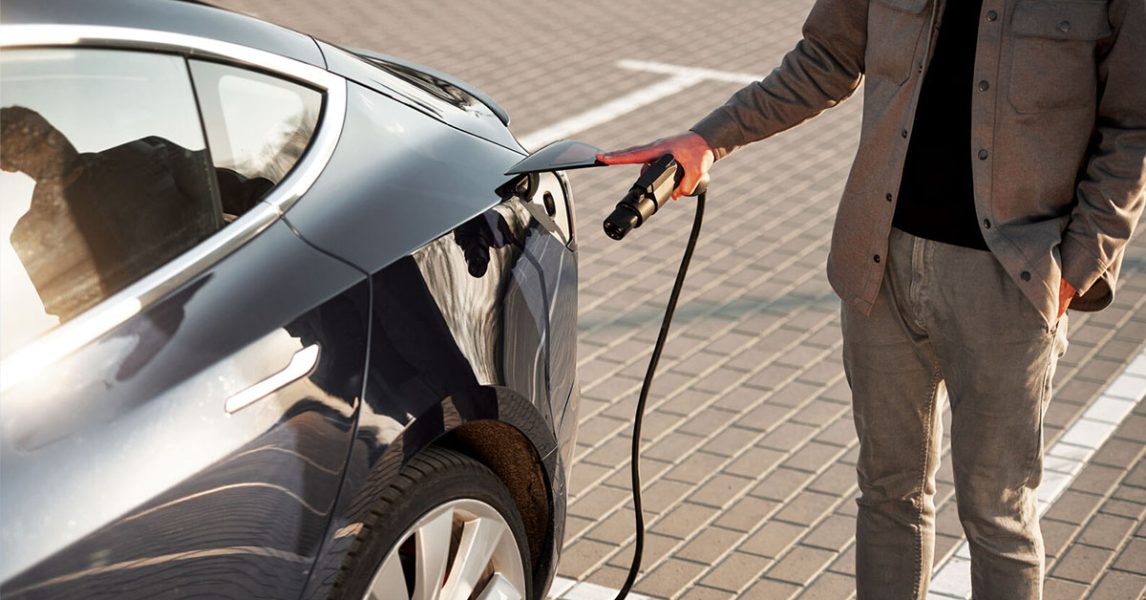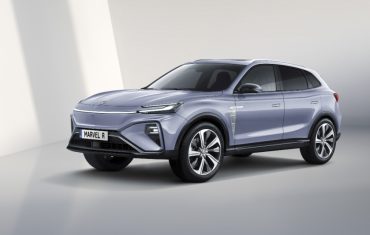
All you need to know about servicing and repairing an electric vehicle
For driversThere’s a lot to learn – and like – about the transition to electric vehicles.
Although today’s choice of vehicles might be a bit limited and command a premium price tag, they are cheaper to run thanks to generous federal government incentives that eliminate fringe benefits tax (and other applicable state government rebates) and lower energy costs.
But, what about keeping them on the road? Are EVs cheaper or more expensive to maintain? And are they easier or more complicated to repair when damaged?
Well, let’s find out…

Servicing an EV
Electric cars might appear to be more complicated, but it’s the opposite – they are far simpler machines than conventional cars with an internal combustion engine.
Electric motors, for starters, are sealed units, which means they do not require any outside assistance – like air intakes in an ICE – to operate. Nor do they need lubricants such as oil, or complex cooling systems with radiators and water pumps.
That ensures electric motors are less prone to environmental factors and damage from foreign particles through the air intake, fuel, or lubricants.
In fact, electric motors have significantly fewer moving parts and, subsequently require no long-term maintenance to ensure they continue to operate properly.
As a result, EVs are both easier and cheaper to maintain and usually have longer prescribed service intervals than vehicles with a combustion engine only to check the wear and tear on normal consumable items like the brakes, tyres, wheel bearings and suspension components.
This will, in turn, have a positive effect on long-term running costs and reduce lease payments with electric vehicles.
But there are bottlenecks within the current service network to cope with the influx of new technologies, and not all dealerships and mechanic workshops are qualified or have the infrastructure, to service electric cars at the moment.
“Our industry has adapted to a whole raft of new technologies as the car has evolved over time, and the transition to electric vehicles is just another step change,” said Stuart Charity, CEO of the Australian Automotive Aftermarket Association (AAAA).
“The biggest challenge our members are facing is, because this will happen over a period of time, is when to go because the investment is quite significant, and the demand is limited at the moment.
“It’s a big job. We estimate there are over 100,000 independent repair technicians out there working in the industry that need to be trained to work on EVs.”

Charity says the fundamental differences in servicing electric vehicles are understanding the safety protocols and having the correct tools and protective equipment to work with high-voltage electronics.
“They do create some unique occupational health and safety issues and we have to have adequate training for not only technicians, but workshop managers, roadside assistance and emergency workers to understand that,” he added.
The majority of electric cars require servicing through the manufacturer’s dealership network, with the exception of the new Chinese brand BYD which has established an aftersales program with the NRMA’s chain of MyCar service centres.
But Charity says that EVs could also provide opportunities for independent specialists so that electric car owners can better understand the long-term health of their vehicle and reduce battery degradation which will improve re-sale values.
“Anecdotally, we know electric vehicles consume tyres quicker than ICE vehicles owing to their high torque outputs and increased weight,” said Charity.
“And there are also other diagnostics and system checks our technicians can perform to help accelerate the understanding of battery electric vehicles and how to maintain their performance – particularly driving range – over a long period of time, which in turn helps consumers.”

What happens if I crash an EV?
If you are involved in an accident with an electric car, there are a few unique hazards and processes you should be aware of.
But there are also a number of things you should always do, no matter what the situation.
The first is to assess the scenario and make sure you, and any other occupants in the vehicle, are not injured. If that’s the case, and the vehicle can still be moved, then find a safe place to pull over on the side of the road so as not to disrupt the flow of traffic.
Obviously, if anyone does require medical attention then call the emergency services immediately.
Then, turn the ignition off, make sure it is safe to exit the vehicle and check the welfare of occupants in any other vehicles that may be involved.
Now, electric cars can react differently to combustion engine vehicles when severely damaged. While there is almost no risk of electrocution, as the computer system will automatically shut down the high-voltage battery when it detects a heavy impact, the battery pack can ignite if damaged or the electrolytic fluids are exposed.
This might not happen immediately like a petrol fire, as it is caused by a chain reaction when individual cells break down on a different timeline.
In any case, it requires a specialised process from the emergency services and can take much longer, to extinguish. Battery fires also produce toxic gases. So, if you are involved in an accident with an EV that catches fire, move away from the vehicle and in the opposite direction to the wind.
From there, like in any accident, make notes about how it happened, take photos on your phone of the scene and damage to your vehicle as evidence and exchange details with other drivers. If the police need to be involved, provide them with an accurate statement of facts.

Repairing an electric car
Now, repairing an electric car is where it becomes more complex, both in terms of the vehicle itself and the height of barriers currently in place through a limited network of qualified repairers and the cost for insurance providers.
On the first subject, dedicated electric vehicles are constructed differently to conventional vehicles with an internal combustion engine with smaller electric motors at the front or rear of the car (or, in many cases, both ends of the vehicle) with a large lithium-ion battery under the floor.
On a positive note, this means they have larger deformation areas (or crumple zones) that can absorb more energy in an impact which, in turn, provides greater protection from injury for the occupants inside the safety cell. They also have less parts at the front of the car, with smaller radiators for those with a dedicated battery cooling system.
Because of the latter, low-speed incidents, such as a simple nose-to-tail bump in peak-hour traffic, can cause less damage and are cheaper to repair.
However, if the battery pack and high voltage system is damaged then the problems increase at an exponential rate.
The Lithium-ion batteries in electric cars are the single most expensive component and can cost between $15,000-$30,000 to replace, forcing insurance companies to ‘write-off’ EVs more often than commissioning them to be repaired.
They are also much harder to access for the repair industry as the majority of global battery production is currently swallowed up in manufacturing the growing league of new vehicles.
According to a report by Thatcham Research, an automotive industry specialist in the UK, a recent survey indicated that EVs cost up to 25 per cent more and take 14 per cent longer to repair than ICE vehicles, having an adverse effect on fleet management.
That’s the state of the repair and service industry for electric cars today, but it will ultimately change and adapt – becoming more accessible, more affordable, and quicker for repairs – as electric cars become more prevalent in years to come.

Talk to SG Fleet about how we can help your organisation, at any stage, as you transition towards electric mobility.
 Driving Insights
Driving Insights




